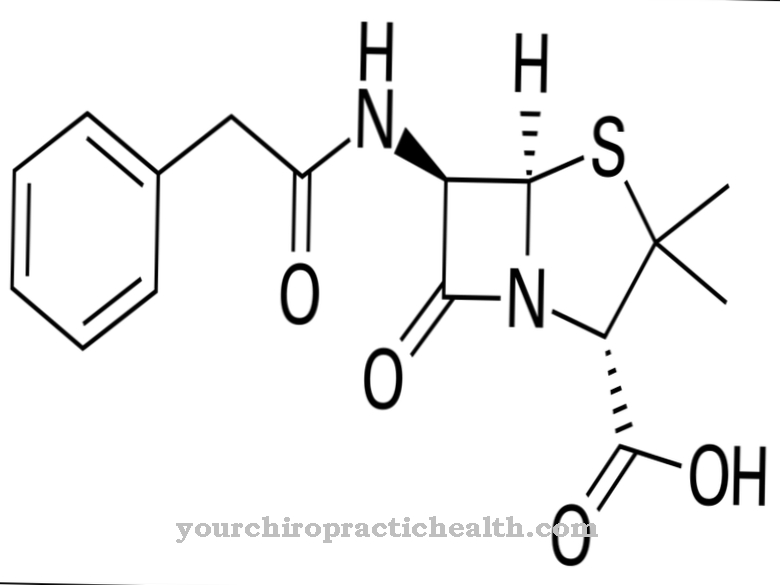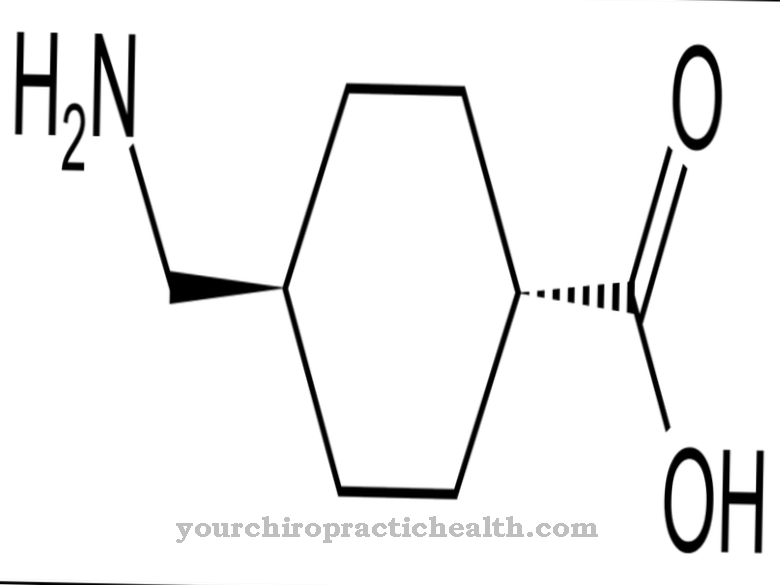As Cefuroxime is the name of a drug that belongs to the cephalosporins. The beta-lactam antibiotic is used to treat bacterial infections.
What is cefuroxime?
Cefuroxime is a beta-lactam antibiotic that kills bacteria. It comes from the group of cephalosporins of the 2nd generation. The drug is endowed with a broad spectrum of activity and can be used for moderate diseases where there is no danger to life.
Cephalosporins have been available to medicine since 1955. They were obtained in pure form from the mushroom Cephalosporium acremonium by the physicians Edward Penley Abraham and Guy G. F. Newton. From the 1960s onwards, numerous derivatives of cephalosporin with more powerful effects emerged, such as cefuroxime.
In Germany, cefuroxime is offered under the product name Elobact®. There are also numerous generic drugs.
Pharmacological effect
Like the other cephalosporins, cefuroxime is able to kill bacteria, which also applies to fast-growing specimens. The beta-lactam antibiotics are structurally equipped with a special beta-lactam ring that disrupts the development of the bacterial cell wall. This process ultimately causes the germs to die off. Due to the effect of cefuroxime, water flows into the cells of the bacteria, which leads to their swelling and decay.
Cefuroxime has a particularly good effect against gram-negative rods. These include primarily the Haemophilus influenzae bacterial genus. In contrast, pseudomonads and enterococci show resistance to the antibiotic. Cefuroxime is very stable against beta-lactamases.
Cefuroxime reaches the gastrointestinal tract via the oral cavity, from where it is absorbed into the patient's body. But it is also possible to give the antibiotic by transfusion into a vein. The drug does not break down. Instead, it is quickly eliminated from the body through the kidneys.
Medical application & use
Cefuroxime is mainly used against infections caused by streptococci, as these are very sensitive to the antibiotic. These are respiratory infections such as chronic bronchitis or pneumonia, inflammation of the mouth and throat, infections of the ear, nose and throat area such as runny nose, sinusitis, otitis media or tonsillitis.
Further indications are infections on the skin, urinary tract infections, kidney inflammation, infections of the soft tissues, joint inflammation, bone infections, Lyme borreliosis, blood poisoning (sepsis) or sexually transmitted diseases such as gonorrhea (gonorrhea).
Cefuroxime tablets are taken directly after a main meal. Breaking or chewing the tablet is not recommended in order not to affect the effectiveness of the antibiotic. It is also possible to make a suspension from a cefuroxime dry juice. For this purpose, boiled cold water is mixed into the bottle with the dry juice. Then shake the bottle well. As with the tablets, the suspension is taken after a main meal.
It is important to take cefuroxime regularly so that the concentration of the active ingredient in the body remains high. A maximum daily dose of between 250 and 500 milligrams is recommended for adult and adolescent patients. The patient administers the dose every 12 hours. For children from 5 years of age, 125 to 250 milligrams of cefuroxime are provided twice a day.
How long the antibiotic is given depends on what disease the patient is suffering from and how severe it is. Under no circumstances should the patient discontinue therapy too early, otherwise the disease may relapse as not all bacteria have been killed. This can also make the bacteria resistant to cefuroxime.
Risks & side effects
With the use of cefuroxime, side effects are possible. 1 to 10 percent of all patients suffer from undesirable side effects such as hives, skin rashes and itching. Difficulty breathing, fever and circulatory problems can also occur.
The allergic reactions show up either immediately after starting treatment or weeks later. The amount of antibiotic does not matter. If an allergy occurs, the patient must contact the attending physician and, if necessary, stop the therapy.
In up to 10 percent of the sick, dizziness, headaches and fungal infections are also possible. Other possible side effects are liver dysfunction, temporary changes in the blood count, loss of appetite, nausea, vomiting, abdominal pain, biliary obstruction and jaundice.
If the treatment with cefuroxime lasts longer, there is a risk of infestation of the large intestine with fungi or resistant bacteria, which is noticeable in the form of intestinal inflammation with diarrhea.
Cefuroxime may not be used if the patient is hypersensitive to the active ingredient or another beta-lactam antibiotic. In the case of bronchial asthma or allergies, a medical examination is necessary as there is a risk of hypersensitivity. Cefuroxime is not suitable for children under three months.
During pregnancy, the doctor must consistently weigh the benefit and risk for the patient before use. The same applies to breastfeeding, as cefuroxime can pass into the baby through breast milk, which often leads to disturbances in the intestinal flora.
Since there is a risk of interactions, cefuroxime should not be taken together with aminoglycoside antibiotics such as amikacin or gentamicin or diuretic drugs such as torasemide and furosemide. There is a risk that the kidneys will be damaged.








.jpg)



















